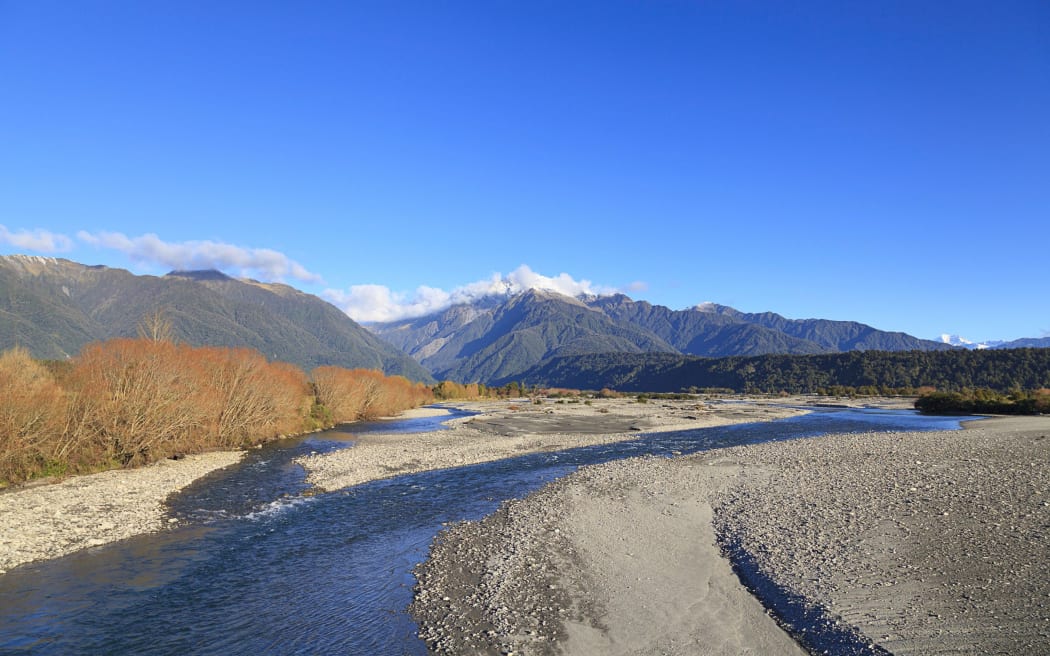A paramotor pilot who died on a flight near the Poerua River on the West Coast was seen flying at a low height before the fatal accident.

The Poerua River on the West Coast (file image). Photo: 123rf.com
A Civil Aviation Authority (CAA) investigation found the crash in November 2020 was likely caused by a wing collapse during a low level flight, from which there was insufficient height for the pilot to recover.
It encouraged paramotor pilots to be aware of the minimum height requirements to ensure they remained at a safe height during flight.
There were no witnesses to the accident but damage to the paramotor indicated it struck the ground in a steep angle with a high rate of descent about three kilometres up the river from where the pilot had launched at the river mouth.
He took off about 3.30pm on 21 November 2020 from the Poerua River mouth and had arranged to return to the launch site in a jetboat by 5pm. A search began about 6.15pm after he failed to return and the crashed paramotor was found on the river bank shortly after 7pm.
The 50-year-old pilot died from injuries sustained in the crash.
The paramotor wing and engine were inspected after the accident, and no defects were identified that may have prevented its normal operation.
The pilot had completed a 12-day course in Christchurch to learn to fly a paramotor the month before the accident. He had completed more than 45 paramotor flights but the CAA report found he was he was likely not exposed to the types of conditions prevalent on the West Coast.
He used a GoPro camera to record many of his flights, including one on the day of the accident, but not the fatal flight itself.
When the footage was reviewed, it was evident the man had flown his paramotor below the minimum safe height of 500 feet on multiple occasions.
An eyewitness at the river mouth on the day of the accident watched the man take off and fly downwind up the river, he lost sight of him when he flew behind trees in a bend in the river, which indicated he was near tree-top height of 80-100 feet high.
The CAA said a paramotor wing could be successfully recovered from an aerodynamic stall or an in-flight upset if it occurred at a safe height.
Flying downwind at low level left little margin for error and not enough height to recover if an upset or stall was encountered due to turbulence or mishandling.
A CAA Safety Action was raised for the New Zealand Hang Gliding and Paragliding Association to remind paramotor pilots to be aware of the minimum height requirements, to ensure they remained at a safe height during flight, and that they understood the risks in flying paramotors at low levels unnecessarily.
Chief executive Nick Taber said the hang gliding and paragliding flying community was deeply saddened by this event, and their thoughts were with the pilot's family.
"We thank the CAA for thoroughly investigating this accident. It is important that as pilots we find meaning and learn from such tragic events to prevent it happening to others, which in this case highlights the importance of flying at a safe height."
The association recently created a national safety officer role to proactively collate and disseminate safety information and better educate regional club safety officers on how best to keep local pilots safe.

